My Diagnostic Medical Kit (A Paramedic’s Personal Gear)
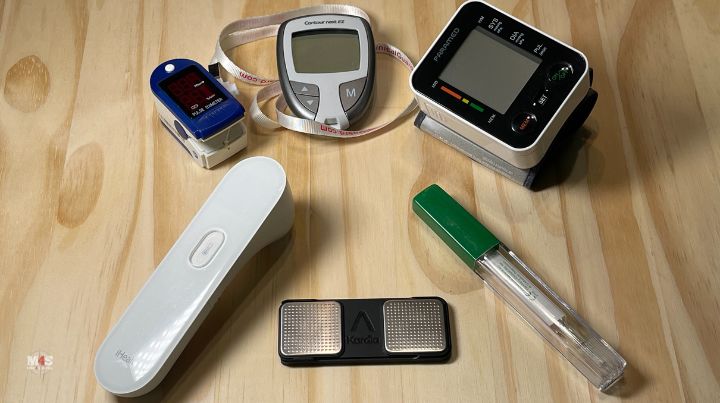
As an experienced remote paramedic, I’ve assembled what I feel is a well-rounded, very effective kit of diagnostic medical gear. This is gear that, when assembled, helps turn basic first-aid kits into aid bags of life-saving medical supplies.
This article is based on my first-hand experience, which over the years, helped me to create a solid base of diagnostic gear for my portable medical kit. Additionally, it’s allowed me to provide a higher level of care to the people I’ve cared for, and it can help you do the same.
So, don’t hesitate! Dive into this article on what I feel is the essential diagnostic medical gear for your aid bag.
Disclaimer: I must state that medical treatment and procedures are often unique to an individual and situation. Therefore, as always, it’s important that you discuss your medical needs with your personal healthcare provider. Additionally, this article contains affiliate links that I may receive a small commission for at no cost to you if you choose to purchase a product through a link on this page.
Stethoscope
Stethoscopes are an essential tool in any medical professional’s arsenal. They allow healthcare providers to listen to the sounds of the body, providing valuable insight into patient health and well-being. In addition to its usefulness in the medical setting, a stethoscope can also play an essential role in your medical gear.
By keeping a stethoscope handy at all times, you can monitor your own heart rate and breathing patterns for signs of illness or distress. This can be especially helpful when out in crowded or unfamiliar environments, where it can be difficult to tell how your body is responding to stress and exertion.
Lung Sounds
One important diagnostic duty of a medical provider is to listen to a patient’s lungs in order to diagnose any potential issues. This is because sounds produced by the lungs, or lung sounds, can provide valuable clues about an individual’s overall health and well-being.
For example, a capable care provider may be able to pick up wheezing or rattling sounds in the chest cavity that can indicate bronchitis, pneumonia, or another respiratory condition. By listening carefully to lung sounds with a stethoscope, doctors can make rapid and accurate diagnoses that can lead to more effective treatment.
Abdominal Noises
Listening to a person’s abdominal sounds is an essential part of examining and diagnosing their condition. By placing the stethoscope on the stomach or abdomen, a medical provider can hear what is going on inside the body and get clues about potential issues.
For example, by listening closely, they can detect the frequency and intensity of bowel sounds, which are related to general states of health as well as certain conditions such as gastroenteritis. Additionally, by paying close attention to other sounds, such as rumblings or fluctuations in tone and pitch, they can detect signs of inflammation or obstruction in the digestive tract.
My Stethoscope
When it comes to stethoscopes, my go-to has always been a Littmann Classic III Stethoscope by 3M.
Blood Pressure Monitor

One of the most critical aspects of prolonged or emergency medical care is monitoring a patient’s blood pressure. Not only does blood pressure reveal key information about the patient’s physical condition, but it also helps to guide treatment decisions and inform paramedics of any potential complications or red flags.
In order to accurately monitor this vital indicator, a caregiver must have a thorough knowledge of how to use and interpret the equipment used for measuring blood pressure, such as manual cuffs, automatic monitors, and other specialized devices. A full understanding of these techniques is essential to effectively assess and treat patients in critical situations, allowing them to provide effective support until a patient improves or is transferred to a higher level of care.
Automatic Blood Pressure Monitors
The ability to swiftly assess a patient’s condition and provide critical care can mean the difference between life and death. That’s why, especially when I’m operating on my one, I use an automatic blood pressure monitor. It allows me to work on other areas of patient care while simultaneously obtaining an accurate reading of a patient’s vital signs.
When it comes to automatic blood pressure monitors, I prefer a wrist version. I like using automatic wrist blood pressure cuffs because they take up less room in my first aid kits. That’s important when working with a portable medical kit because space is often tight and extremely expensive when flight hopping into the middle of nowhere.
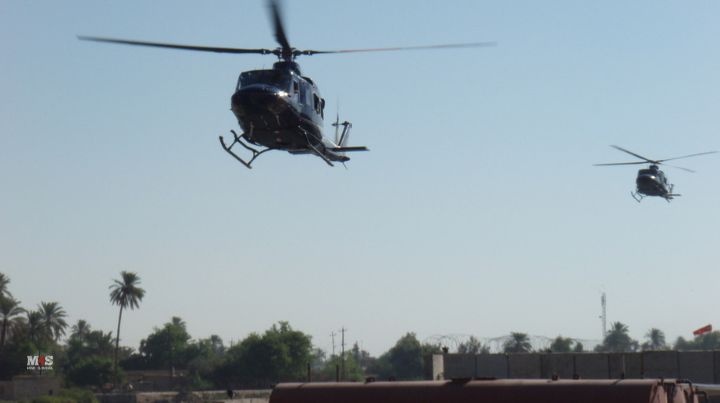
Manual Blood Pressure Monitors
In my opinion, a manual blood pressure cuff should be mandatory in any well-stocked first aid kit. And yes, I feel everyone should be able to take manual vital signs, not just first responders and other medical professionals.
A manual blood pressure cuff is important because current technology, as I will discuss later in the article, is not always reliable. Therefore, to ensure you have the ability to manually auscultate (listen to) a blood pressure, pair your stethoscope with a reliable, manual blood pressure cuff.
Here’s a blood pressure cuff that should do the trick: Paramed Blood Pressure Cuff.
Glucose Monitor
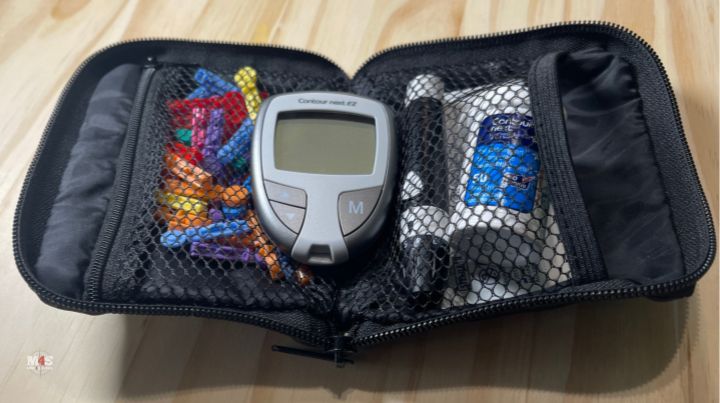
When it comes to managing your health and well-being, nothing is more important than knowing what’s going on inside your body. A glucose monitor is one of the most useful tools for tracking blood sugar levels, as it provides fast and accurate readings in a convenient, portable form.
By regularly checking your blood sugar with a glucose monitor, you can effectively assess how various foods and activities are affecting your health, allowing you to take the necessary steps to achieve optimal wellness. Additionally, having a reliable glucose monitor in your portable health kit can give you peace of mind when you’re away from home or dealing with an unexpected medical emergency.
Whether you’re seeking better balance in your diet or navigating unknown medical situations, a good glucose monitor can be an essential tool for maintaining overall health and well-being.
I use the Contour Next EZ Glucose Monitor. It works flawlessly and, when paired with the Contour Next Control Solution, provides fast and reliable test results.
Pulse Oximeter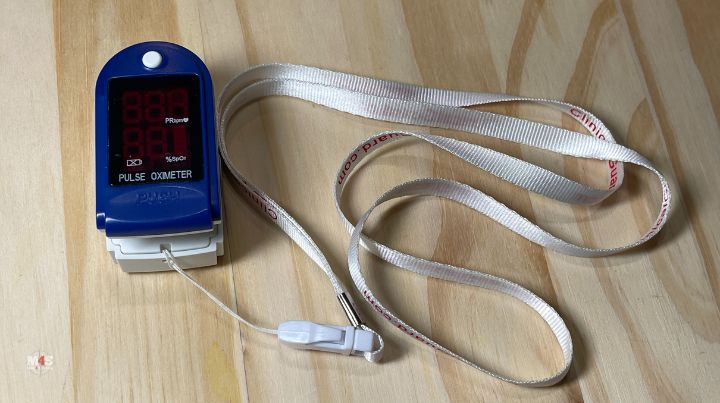
The inclusion of a pulse oximeter in your emergency medical kit can be a vital component when it comes to saving lives. Pulse oximeters work by using light to measure the amount of oxygen in a person’s blood (oxygen saturation).
A pulse oximeter allows you to assess a patient’s condition and respond accordingly. Aside from its practical benefits, a pulse oximeter can also provide much-needed peace of mind for patients who are struggling in their time of need. Whether you’re suffering from cardiac arrest or critical injury, monitoring and maintaining oxygen levels is incredibly important for surviving an emergency situation.
My Pulse Oximeter
My pulse oximeter is ten years old, still works like a champ, and is not manufactured anymore.
However, with nearly five stars and over 200,000 ratings, the Zacurate Fingertip Pulse Oximeter is my replacement choice.
iHealth No-Touch Digital Forehead Thermometer
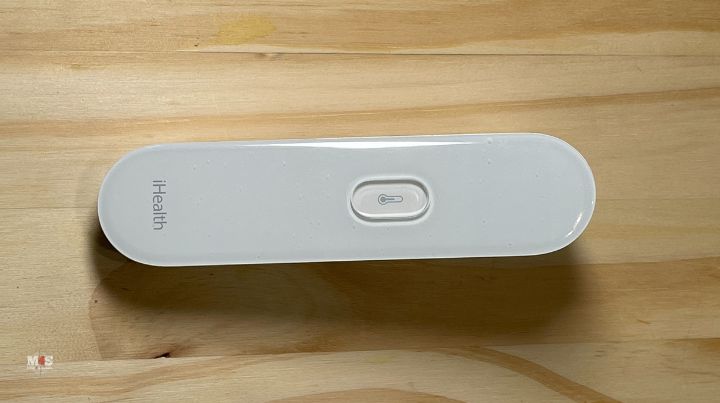
The chief benefit of the iHealth No-Touch Forehead Thermometer is that it helps you maintain distance from a person who may have a contagious disease.
As a paramedic, I routinely interacted with people suffering from contagious diseases. Therefore, I’ve always been very pro-distance, pro-Body-Substance-Isolation, and N95 masks when trying not to become infected by someone else. And, having sat in the rear of an ambulance with people who had active tuberculosis, among other diseases, I’m confident that avoiding contact with a possible contagion helps keep you safe. I’m living proof.
What I like about no-touch thermometers is it affords caregivers to stay farther than an arm’s length away from a patient. That benefit also applies when trying to take the temperature of a young person whose salvia-induced overdose of violent hallucinations has taken him down a four-day visit to Dorothy’s rabbit hole and beyond.
Whatever your reasoning, having the ability to maintain space is always a good thing. Therefore, I recommend carrying an iHealth No-Touch Forehead Thermometer. Mine has always worked like a champ, and with 5½-stars and over 150,000 ratings, other people think so as well.
Manual Thermometer
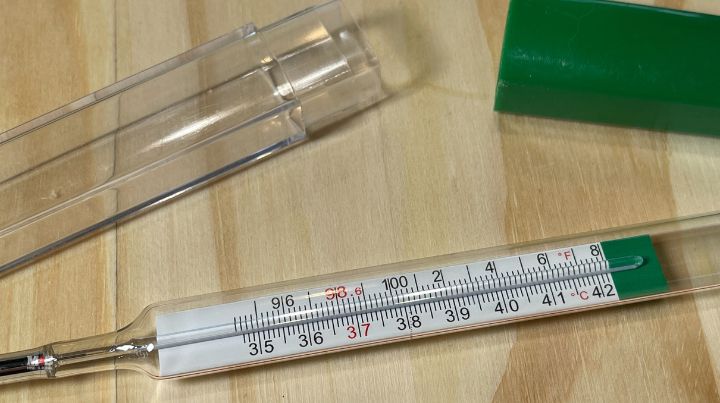
By now, you probably realize I’m a fan of manual backups to my automated first aid supplies. And you are 100% correct in your observation, which applies to technologically evolved thermometers.
Also, because I want to monitor a person’s core body temperature during times of potential heat injury or hypothermia, I carry a mercury-free oral/rectal thermometer with my medical supplies.
Kardia Cardiac
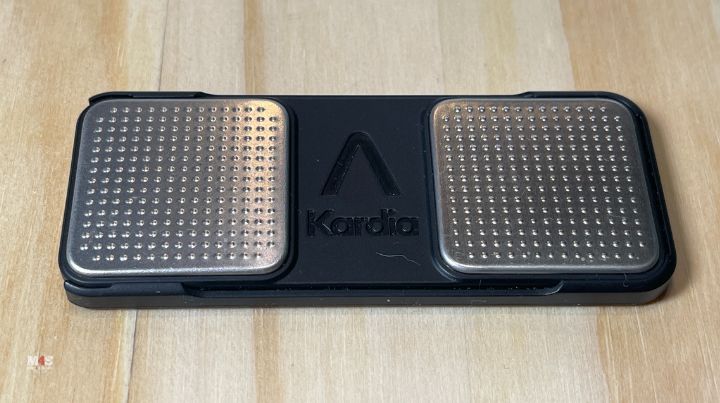
Paramedics were initially created to treat pre-hospital cardiac emergencies. And, having a lot of field along with in-hospital experience with EKGs, I like to know what’s going on with the heart. As with the other diagnostic gear here, the Kardia Cardiac App and Monitor helps you paint the picture of what exactly is happening with yourself or another.
Having the ability to know a cardiac rhythm can help decide if a person’s heart is behaving in a manner consistent with life. Is a person weak and light-headed? Maybe it’s a heart problem, maybe it’s dehydration—a quick 60-second EKG strip will help paint a better picture of a person’s situation.
How I Use My Gear
In my case, I use the Kardia monitor to help confirm that what feels like a heart attack is actually pain caused by a Post Traumatic Stress (PTS) attack. It feels like a heart attack, but when I check it with the Kardia monitor and other diagnostic gear so far, I’ve always been reassured I’m okay. Then, it’s a matter of doing my breath work, grounding, and the rest of the hippie stuff I do to get my PTS to chill out.
Baseline Monitoring
I use my diagnostic gear on a fairly consistent basis, even when I’m feeling well. Over time and 100’s of run-throughs, I know within a slim margin of error what is normal for my vital signs and cardiac rhythm. Knowing what is normal for me allows me to be my own best advocate when making health-based decisions and interacting with my healthcare professionals.
The same can be true for anyone who I check on a regular occasion. It’s called establishing a baseline. Establishing a baseline can also help people see how their body responds to different inputs and situations and dial themselves in as a response.
Baseline monitoring of vital signs also helps you become proficient at the physical task of taking vital signs. In turn, as your proficiency increases, so will your capability when placed under the stress of an emergency situation.
You Don’t Have to Be an Experienced Health Care Worker
The great part about this gear is that you don’t need to be an experienced healthcare worker to use it. It is all relatively easy to learn to get pertinent information for or to pass on to others who may be involved in the treatment process.
Treat the Patient, Not the Machine
The most important thing to remember when using your diagnostic medical kit is this: Treat the patient, not the machine! It is easy for some to become fixated on the numbers and the equipment. It is also easy to discount what the patient tells you for a pre-conceived narrative we build in our heads around the numbers we see.
Case in point, I once had an EMS call for a lady feeling extremely weak and dizzy. She was so weak and dizzy she couldn’t stand. When I asked my relatively new EMT-level partner what her heart rate was, he told me 84—normal. The only problem was he hadn’t felt her heartbeat. Instead, he relied on the pulse oximeter to give him a number he assumed was her heart rate.
The problem was the lady was in supraventricular tachycardia (SVT). In simple terms, her heart was screaming at 200 beats a minute, more than double the normal 80. Her heart was beating so fast it wasn’t able to fill up with blood before trying to pump it to the rest of the body. As a result, the pulse oximeter could only register every other beat.
Had I not known that a heart rate of 80 didn’t add up with her complaints, I might have accepted 80 as fact, and she would have died in the back of my ambulance. As it was, I ended up using a procedure to stop and reset her heart, which is another entire ball of fun to be discussed later.
Again, the moral of this story, treat the patient, not the gear.
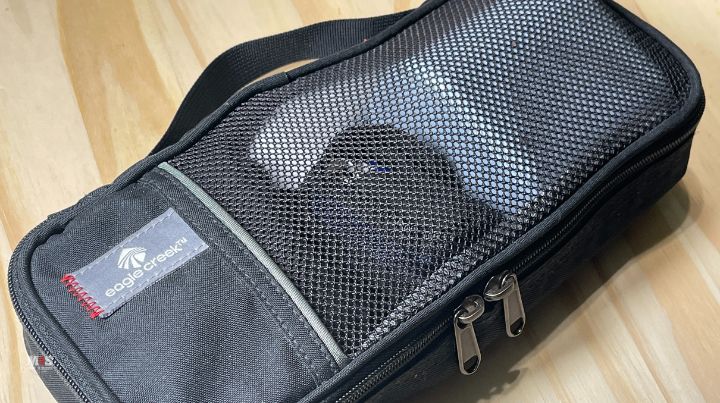
The Bottom Line on My Diagnostic Medical Kit
Having a set of diagnostic medical gear allows me to expand my ability to monitor and make more effective decisions regarding my health and the health of anyone I may find myself caring for.
The fact is while people are limited by knowledge and understanding, having the ability to probe deeper and understand more about every situation, medical and otherwise, helps you to make more accurate decisions. And, it’s more accurate decision-making that’s required when medical treatment and lives are on the line.
Have you used any home-use diagnostic medical gear? If so, tell us your thoughts in the comments below!
Additional Resources:
- 12 Best Wound Care Supplies (Survival Medical Kit)
- What to Keep in Your Trauma Medical Kit
- Prepper Medical Supplies: OTC Meds
Stay safe!

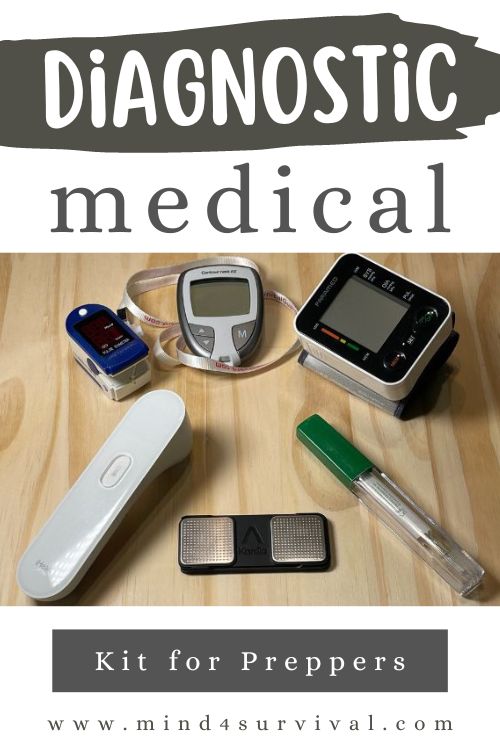
Don't Miss Out!
Join the thousands of people who rely on Mind4Survival preparedness advice by subscribing to our FREE newsletter.
- Practical preparedness information
- Zero Spam
- < 0.25% of people unsubscribe




Join Mind4Survival!
Stay informed by joining the Mind4Survival! 100% Secure! 0% Spam!
Follow Us!
Affiliate Disclosure
Mind4Survival is a free, reader-supported information resource. If you make a purchase through our link, we may, at no cost to you, receive an affiliate commission.


The Kardia Cardiac – does it work independently? Like it doesn’t need a computer or internet connection? Would it work in a grid down situation? Thanks.
The KardiaMobile monitor uses your cell phone to check for Arrhythmia. The one we have does not print and can only provide information for a couple of heart conditions.
Do you think it is valuable for off grid help?
The problem with having diagnostic equipment, even if you know how to use them, is having the medical supplies to treat said condition. In a SHTF, grid down situation what are you going to do if you diagnose low or high blood pressure? Do you have medications to treat, IV fluids, antibiotics? Will you know how to determine the cause of the symptoms? Is the blood pressure low due to dehydration, bleeding, or septic shock? If you can get a basic EKG and you are in an abnormal rhythm what are you going to do about it? What is causing it? Some are reversible causes that are simple some are not.
So while I respect that Brian has great knowledge as a paramedic he also is basing this on having the supplies and healthcare system in place to save lives.
Retired RN here and based on the fact that in a grid down situation if you have a life threatening condition and no healthcare system with access to even basic things like IV fluids you are going to die. Knowing that you have an abnormal BP, heart rate, low blood oxygen is just knowledge without the means to correct it. IMO.
@ Trudy: Although what you say is somewhat true, there ARE other options if no traditional healthcare is available. For more than decades, people have treated health issues without medications using herbs. Those herbs are still available and can be used to treat many health problems. I, personally, don’t like to use medications but rather use herbal alternatives. There are even alternatives to antibiotics….
When there are no doctors, no hospitals, no pharmacies, you do what you can. Having these diagnostic tools, you will be able to then use the herbal knowledge and plants to give help to those in medical crisis.
Better to do SOMETHING, and have items to help you than just sit there and do nothing.
A good addition to this kit would be an otoscope, they device that looks into ears to see if you have an infection. They are not expensive and can be purchased at Walmart and other stores.
All of the diagnostic equipment listed here (with the exception of the oral/rectal thermometer, manual BP cuff and stethoscope) require batteries to operate so, a supply of batteries for these instruments will be essential.
Great catch! Thanks!